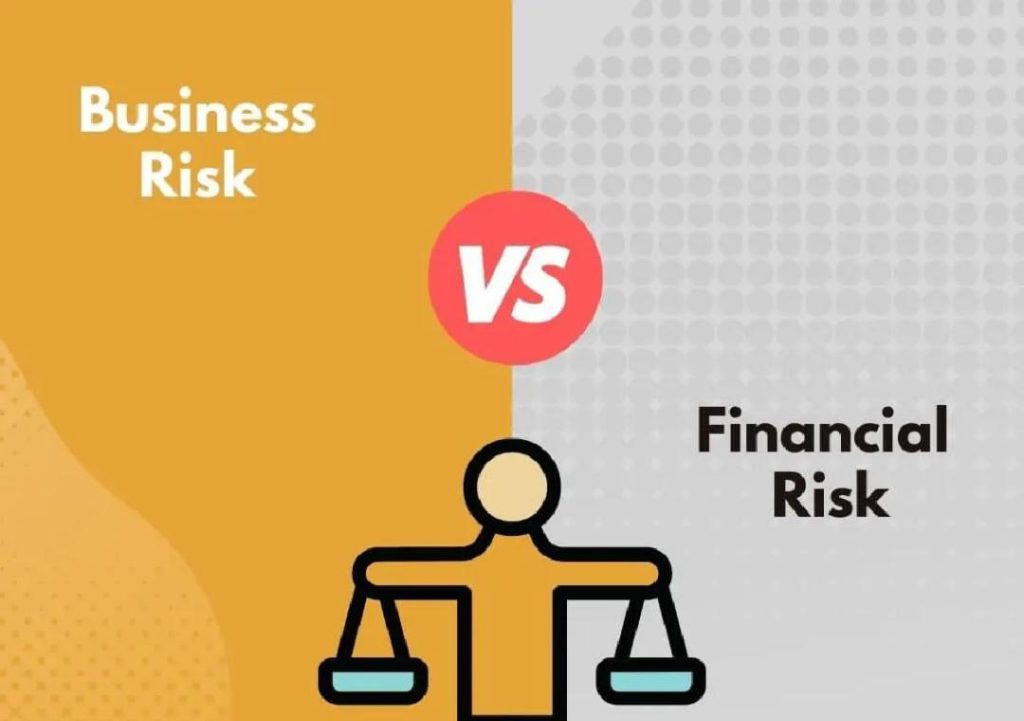
What is the Difference between Business Risk and Financial Risk?
When it comes to running a business, risk is an inherent part of the game. There are numerous factors that can impact a company’s success, from changes in consumer preferences to supply chain disruptions. As a business owner, it’s essential to understand the different types of risks that your company may face and develop strategies to mitigate them. In this blog post, we’ll delve into the differences between business risk and financial risk, and explore how companies can manage these risks to achieve long-term success.
Business Risk: The Risks of Daily Operations
Business risk is the uncertainty and unpredictability that arise from the day-to-day operations of a company. This type of risk is often related to external factors that can impact a company’s profits, such as changes in consumer preferences, intense competition, or supply chain disruptions. Business risks can also stem from internal factors, such as poor management decisions, inadequate training, or lack of resources.
Some common examples of business risks include:
- Changes in consumer preferences: A company that relies heavily on a single product or service may be vulnerable to changes in consumer preferences. For example, a company that specializes in CDs may struggle to adapt to the shift towards digital music.
- Competition: The threat of competition can be a significant risk for businesses, especially those operating in highly competitive industries. Companies may struggle to differentiate themselves from their competitors and attract customers.
- Supply chain disruptions: Companies that rely on complex supply chains can be impacted by disruptions, such as natural disasters, supplier insolvency, or transportation delays.
- Regulatory changes: Changes in laws and regulations can impact a company’s ability to operate, particularly in industries such as finance, healthcare, and technology.
To manage business risk, companies can employ various strategies, such as:
- Diversification: By diversifying their product or service offerings, companies can reduce their reliance on a single market or customer base.
- Efficiency: Companies can streamline their operations to improve productivity and reduce costs.
- Flexibility: Companies can stay agile and adapt quickly to changes in the market or consumer preferences.
- Risk assessment: Companies can conduct regular risk assessments to identify potential threats and develop strategies to mitigate them.
Financial Risk: The Danger of Debt
Financial risk is the danger of failing to meet debt obligations, whether it’s a loan, bond, or other type of debt. This type of risk is often related to a company’s financial decisions, such as taking on too much debt or not having a sufficient cash reserve.
Some common examples of financial risks include:
- High levels of debt: Companies that take on too much debt can struggle to meet their debt obligations, particularly if their cash flow is insufficient.
- Interest rate risk: Companies that have variable-rate debt can be impacted by changes in interest rates, which can increase their debt burden.
- Liquidity risk: Companies that have difficulty meeting their short-term debt obligations can be considered insolvent.
- Credit risk: Companies that have poor credit ratings can struggle to secure financing or attract investors.
To manage financial risk, companies can employ various strategies, such as:
- Debt-equity balance: Companies can strive for a balance between debt and equity to reduce their financial risk.
- Cash flow management: Companies can manage their cash flow carefully to ensure that they have sufficient funds to meet their debt obligations.
- Risk diversification: Companies can diversify their investments and assets to reduce their financial risk.
- Financial planning: Companies can develop financial plans that take into account potential risks and uncertainties.
Conclusion
Business risk and financial risk are two distinct types of risks that companies face. Business risk arises from the day-to-day operations of a company, while financial risk is related to a company’s financial decisions, such as taking on debt. By understanding the differences between these two types of risks, companies can develop strategies to mitigate them and achieve long-term success.
In conclusion, business risk and financial risk are interconnected, and companies must manage both types of risks to achieve success. By diversifying their product or service offerings, improving efficiency, and staying flexible, companies can reduce their business risk. By managing their debt, cash flow, and financial decisions carefully, companies can reduce their financial risk. By understanding the differences between these two types of risks, companies can make informed decisions and build a strong foundation for long-term success.
References:
https://www.growthjockey.com/blogs/business-risk-vs-financial-risk






